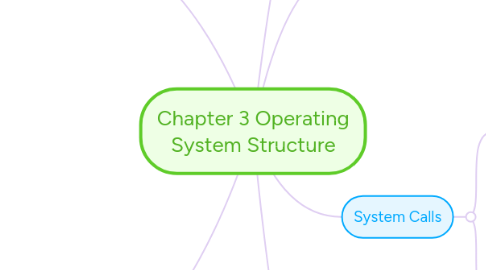
1. Microkernel
1.1. Defition
1.1.1. Small OS core
1.1.2. Only have essential core OS functions
1.2. External subsystems
1.2.1. Device drivers
1.2.2. File systems
1.2.3. Virtual memory manager
1.2.4. Windowing system
1.2.5. Security services
1.3. Benefits
1.3.1. Extensiblity
1.3.2. Flexibility
1.3.3. Reliability
1.3.4. Portability
2. Operating System Design
2.1. Goals
2.1.1. User goals
2.1.2. System goals
3. Operating System Services
3.1. User interface
3.2. Program exexution
3.3. I/O operation
3.4. File system
3.5. Communication
3.6. Error detection
4. Additional Operating System Function
4.1. Resource allocation
4.2. Accounting
4.3. Protection and security
5. System Calls
5.1. General method
5.1.1. Pass the parameters in registers
5.1.2. Parameters stored in a block, or table, in memory, address of block passed as a parameter in a register
5.1.3. Parameters placed, or pushed, onto the stack by program and popped off the stack by the OS
5.2. Types of System Calls
5.2.1. Process control
5.2.2. File management
5.2.3. Device management
5.2.4. Information maintenance
5.2.5. Communication
5.2.6. Protection
6. Layered Approach
6.1. Definition
6.1.1. OS break up into a number of layers
6.1.2. Bottom layer (layer 0) is hardware
6.1.3. Highest layer (layer N) is user interface
6.2. Advantages
6.2.1. Simplicity of construction and debugging
6.3. Disadvantages
6.3.1. tend to be less efficient than other implementations

